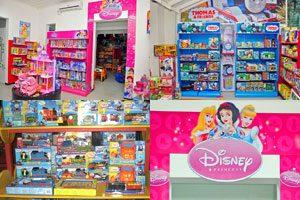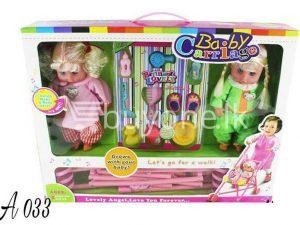Another Christmas has come and gone, and with it the flurry of gift giving, giving me a chance to reflect on the challenges I faced this year in that regard. It was a first-hand, sharp, and startling reality check that despite the year being 2017, gendered norms and stereotypes are all around us.
It was in the weeks leading up to Christmas that my partner and I began purchasing gifts for a list of nieces, nephews, and children of friends – ranging from just a few months old to around 5 years. Little did we realize the education we were about to receive in gender roles, nor did we anticipate the frustration we would feel in trying to find fun, educational gifts that wouldn’t fall into these traps.

What are gender roles? Gender roles in society mean how we’re expected to act, speak, dress, groom, and conduct ourselves based on our assigned sex. For example, girls and women are generally expected to dress in typically feminine ways and be polite, accommodating, and nurturing. Men are generally expected to be strong, aggressive, and bold. These can vary and be specific to every society, ethnic group, and culture.
When we went shopping in Colombo across various stores, we found that when it came to toys and gender roles the division wasn’t even subtle. The choices for the girls were heavily pink, make-up sets, kitchen sets and princess themed items. We struggled to find a doctor set, and a set of rollerblades that didn’t come in pink and patterned with hearts and flowers. Just to be sure that no mistakes were made – each box/online image also had a picture of a boy or girl playing so we were very clear on whom it was supposed to be for. The options for the boys were just as limited – we turned down many war-themed, football and cricket themed toys. Even Lego and building blocks were pushed into these clear masculine and feminine categories. Of course, we refused to succumb to these notions and instead focused on picking gifts that we knew the kids would enjoy – regardless of whom the box and labels said it was for.

This is not always the case however. I have been to many parties and seen many children who have been given gifts that have been selected with their gender – rather than their actual preferences – in mind. I have seen young boys toss aside the army set and spend hours with the flower garden Play-Doh, and little girls ignore the makeup sets and be absorbed in the Lego set instead. This would all be fine if it wasn’t also accompanied by horrified adults saying, ‘No no darling that toy is not for you!’ and attempt to re-direct them to what has been deemed as the more gender-appropriate gift. This usually results in a miserable child forced to play with a toy they have no interest in, just because the patriarchy has decided this is what is best. For whom though?
While this seems fairly trivial, gendered toys are just the tip of the iceberg of how we begin to stereotype children and enforce patriarchal notions. It is here that we begin to tell children that boys are supposed to be one way, girls another and who gives a fig about whether that is really who you are. Much better to follow this cookie-cutter image of your gender than explore your own likes and dislikes as an individual. We begin teaching children to close down their individual personalities and begin to become cogs in a bigger machine. What this machine does – no one seems to know.
The effects of gendered toys and the enforcing of gender roles through this is more far reaching than just miserable children. Research by the Institution for Engineering and Technology (IET) found that toys with a science, technology, engineering and maths (Stem) focus were three times as likely to be targeted at boys than girls. “Societal stereotypes driving these gendered listings could be having a knock-on effect for the next generation of engineers, especially girls, impacting their future career choices,” the IET warned. “It’s not just the toys which are the issue, but the whole idea that some things are just for boys or girls. If children learn that early, it’s hardly surprising that they go on to apply this logic to their career choices, too.”
Researchers have worried about the impact of having toys that were so segregated by gender for some time, says Lisa Dinella, associate professor at Monmouth University and Principal Investigator of the Gender Development Laboratory. While it may seem like a trivial issue, toys help children to learn new skills and develop intellectually, says Dinella. Dolls and pretend kitchens are good at teachings kids cognitive sequencing of events and early language skills. Building blocks like Lego and puzzles teach spatial skills, which help set the groundwork for learning math principals down the line. “Both genders lose out if we put kids on one track and they can’t explore,” says Dinella.
It is important also to realize that what seems like harmless marketing, also contributes heavily to bullying among children and even adults. Imagine you are a 6-year-old boy, and you go to the toy store. All the Star Wars toys are grouped in the Boys section with blue backgrounds. The Barbies, baby dolls, kitchen toys and princess clothes are in the Girls section with pink backgrounds. As a 6-yr-old boy, you might truly believe that a little girl who plays with Star Wars toys is committing a social transgression. You and your friends yell at her, because she is going against what is acceptable. Maybe you don’t intend to be cruel; you are just confused or frightened because you think that girls are only supposed to like dolls and princesses.
Without education about acceptance, we see these 6-year-olds who follow strict gender rules grow into 12-year-olds who launch more serious attacks against those who challenge gender norms. Schoolchildren may view a boy who likes pink trainers as a threat to what is “normal” and call him cruel names such as ponnaya and beat him up. Girls use words like freak and weirdo to mock girls who do not conform to how a girl should be. Bullying behaviors occur on a continuum, and as children grow older, they move along to more serious aggressions. What starts as a color – pink, in this case – singles a child out as a target, and the aggression is based in both misogyny and homophobia, which go hand-in-hand.
As we evolve and keep educating ourselves, one can hope that one day, toys will stop being broken up by gender and will instead be categorized by type, like puzzle toys, dolls or children’s bikes. There would still be dress-up dolls and monster toy trucks in that world, but instead of being just pink or blue and segregated to different aisles, they would come in every color of the rainbow and be marketed to all kids. Toy choices, should be based on kids’ personal interests, and not on their gender.
As Christia Spears Brown, an associate professor at the University of Kentucky and author of Parenting Beyond Pink and Blue: How to Raise Your Kids Free of Gender Stereotypes says, “All toys are gender neutral, what is not neutral is the way toys are marketed.”

